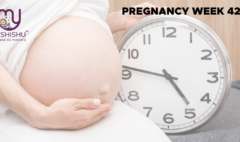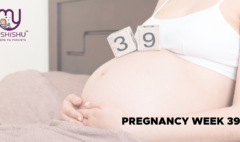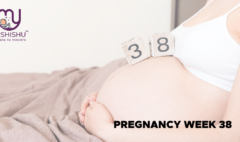Dealing With Childbirth Pain: Causes And Remedies To Follow
Dealing With Childbirth Pain: Causes And Remedies To Follow
Dealing with childbirth pain is a sensitive topic for expectant mothers all over the world. Birthing new life is both miraculous and joyous; however, labor pains may add their share of challenges to this experience. Navigating pain during childbirth is an integral component of childbearing experience.
From initial contraction twinges through early labor to active labor’s intense sensations, successfully dealing with it all is an integral part of the childbearing experience. Within this comprehensive guide, we will explore various strategies and techniques for dealing with and mitigating childbirth’s pain.
No matter, if it be natural methods or medical interventions, understanding all your choices and feeling empowered to make informed choices, are keys to approaching labor with resilience and grace. Come explore this complex world of childbirth pain together as we uncover effective techniques that can help guide this transformative journey with grace and ease!
Understanding the Pain of Childbirth
The experience of childbirth is an overwhelming surge of sensations that overwhelm one with feelings. Your body contracts in waves, each wave intensifying into an agonizing dance of anticipation and agony.
Each nerve pulses with raw energy as each sensation seems like its own concert of struggle and triumph; yet amid all this chaos there remains the unwavering focus, determined to survive for the promise of new life; pain becomes strength instead of sorrow as the sheer power of creation transcends suffering revealing profound beauty as well as profound sacrifice is woven into its fabric of childbirth.
The Key to Dealing With Childbirth Pain During Pregnancy
Navigating the pain of childbirth relies on employing multiple coping mechanisms. Deep, rhythmic breathing helps calm and focus the mind amid all its sensations; visualizations like picturing waves lapping against an idyllic shore offer mental relief as does imagery like picturing this peaceful scene from nature.
Physical touch, whether provided through massage or the comforting presence of a partner, offers grounding and support. Movement such as swaying or gentle walking helps release tension while encouraging forward progress. Vocalizations ranging from low moans to affirmations help release pent-up energy while strengthening and affirming strength.
Maintaining a mindset of surrender rather than resistance allows pain to be acknowledged without becoming overwhelming while accepting each contraction as another step closer to meeting the baby helps develop purpose and determination during labor.
By employing such methods, childbirth becomes not simply an endurance test but instead a transformative journey of empowerment and connection!
Natural Pain Relief Techniques
Breathing Exercises
Mastering breathing exercises becomes essential during labor as they help manage pain. First, practice slow and deep breaths to regulate how your body responds to contractions.
- Take deep, slow breaths through your nose to allow your abdomen to expand fully.
- Exhale slowly through your mouth to release any tension with each breath out.
- Visualize your breath as an undulating wave that rises and falls with each contraction.
- Focusing on breathing can help ground you in the present, decreasing feelings of anxiety or overwhelming.
- Remember to breathe steadily throughout your labor, resisting any urges to hold your breath or become panicky as things intensify.
- Your breath can be an invaluable ally during childbirth, offering both calm and clarity amid all its intensity.
By harnessing your body’s innate rhythm of breathing, you can navigate pain with strength and resilience – ultimately leading to welcoming new life into this world.
Positioning and Movement
Position and movement can play an essential role in managing pain during childbirth. Here’s how they can be effectively implemented:
- Experiment with various positions until you find what feels most natural and helps alleviate discomfort, such as standing, sitting, kneeling, or leaning on a supportive surface.
- Movement can help ease pain and facilitate labor progress. Gentle swaying, rocking, or walking may provide a temporary distraction from discomfort while simultaneously increasing relaxation.
- Use props such as birth balls, pillows, and chairs as supports in various positions for added support and enhanced comfort.
- Altering positions frequently will prevent stiffness and fatigue during labor and enable you to remain engaged throughout.
- Stay aware of your body, listening and following its cues for optimal birthing conditions. If certain positions feel comfortable to you, continue with them; otherwise, explore alternatives.
- With help from birth partners or doulas as needed, adjust positions as necessary and provide physical support as required.
By actively engaging with positioning and movement during childbirth, you can enhance both comfort and coping mechanisms, ultimately increasing the experience of creating life!
Massage and Touch Therapy
Massage and touch therapy can be highly effective ways of relieving childbirth-related pain while aiding relaxation during labor. Here’s how you can incorporate them effectively:
- Start by applying soothing strokes gently over areas prone to tension such as your lower back, shoulders, and hips.
- Apply firm, steady pressure to acupressure points or areas of discomfort to ease pain relief and increase circulation.
- Discover which techniques feel the most soothing by trying circular movements, kneading, or gentle stretching.
- Encourage your birth partner or support person to provide massage and touch therapy sessions as both physical and emotional support for you. This could offer both emotional as well as physical help during labor.
- Utilizing massage oils or lotions with soothing scents like lavender or chamomile will enhance relaxation and promote feelings of well-being.
- Provide clear communication of your preferences and needs to your support team, so they may create a tailored approach to best meet them.
Massage and touch therapy can bring immense power of human connection and tactile sensation into the birthing room, offering soothing relief while creating an ideal birthing atmosphere.
Water Therapy
Water therapy – often in the form of birthing pools or tubs – provides a natural and comfortable means of relieving pain during childbirth. Here’s why water therapy could benefit:
- Immersion in warm water can provide the ultimate way to ease muscle tension and promote relaxation, decreasing contraction intensity while providing a sense of tranquility and relief.
- Water’s buoyancy relieves pressure from your body, giving greater freedom of movement and more comfort during labor.
- Water therapy offers a gentle and supportive environment to assist those giving birth, helping them feel more at ease during the experience.
- Water’s soothing properties can help alleviate anxiety and stress during birthing experiences, encouraging endorphin release – the body’s natural painkillers – for an overall more pleasurable birthing journey.
- Water therapy can strengthen the bond between birthing persons and their partners or support team, creating an intimate yet peaceful setting in which birth can take place.
Individuals seeking a positive birthing experience may benefit from using water therapy in childbirth to manage pain, promote relaxation, and create an empowering and satisfying birth experience.

Medical Pain Relief Options
Epidural Analgesia
Epidural analgesia, an increasingly popular means of pain relief during childbirth, involves injecting medication directly into the epidural space of the spine.
This injection effectively blocks nerve signals in the lower half of the body to provide significant pain relief to birthing individuals while remaining conscious and alert throughout labor.
An epidural may offer effective pain relief; however, it should always be considered carefully by medical practitioners due to potential risks such as temporary weakness in the legs or a decrease in blood pressure that must be carefully considered when monitoring its usage.
Nitrous Oxide
Nitrous oxide, more commonly referred to as laughing gas, is a self-administered form of childbirth pain relief used through inhaling.
When inhaled through a mask it quickly provides quick onset pain relief with relaxing effects; although not eliminating pain; rather helping reduce its intensity and perception; providing some degree of control as individuals can control how much of it they inhale according to comfort level; having short duration effects allows individuals to remain alert during labor while remaining mobile during contractions.
Generally considered safe both for birthing mother and child – making nitrous oxide an attractive choice among childbirth pain management options when used during labor pain management.
IV Medications
Intravenous (IV) medications offer pain relief during labor by being directly administered into a vein and directly into your bloodstream through IV therapy.
Such IV medications, like opioids like Fentanyl or Morphine, act quickly to alleviate discomfort, with medical staff making adjustments based on individual needs and goals of care providers. IV medications offer systemic pain management by targeting specific parts of the body rather than targeting just pain intensity; though their systemic approach means they could potentially reduce intensity but could cause side effects like fatigue or nausea.
Continuous monitoring by healthcare providers ensures safety while optimizing pain relief during childbirth making IV medications an invaluable choice when it comes to childbirth pain management!
The Importance of a Supportive Environment
An environment conducive to childbirth can play an essential role, both physically and psychologically. Here’s why:
- Emotional Comfort: Being immersed in an emotionally supportive environment provides a sense of safety and reassurance, helping decrease anxiety levels during labor while encouraging relaxation and relieving tension.
- Confidence Builder: Encouragement and positive reinforcement from caregivers and loved ones help build the birthing person’s self-assurance, giving them strength through this journey.
- Communication: Effective dialogue between healthcare providers and those preparing to give birth ensures their preferences and concerns are heard and taken seriously, thus building trust and collaboration between all involved.
- Advocacy: An environment supportive of birthing women must advocate on their behalf to facilitate informed decision-making and empower them to actively take part in their care.
- Physical Comfort: Comfort measures such as massage therapy, relaxation techniques, and accessing pain-relief options can all contribute to creating a more pleasurable birthing experience.
- Maintain Support: Laboring mothers often require help and encouragement throughout labor from someone, such as their partner, doula, healthcare provider, or doula. Having constant encouragement and assistance during this experience can make all the difference!
- Respecting Culture and Preferences: For an experience that is both culturally sensitive and inclusive, birth should take place within an atmosphere that values its birthing person’s cultural beliefs and preferences. A welcoming birthing space should recognize these factors in ensuring an optimal experience.
- Postpartum Support: Postpartum care goes far beyond labor; guiding during postpartum to facilitate healing and strengthen bonds between mother and infant.
Creating a birth plan
Crafting a birth plan is essential when planning for childbirth. Begin by researching your options regarding pain management techniques and birthing positions; prioritize preferences regarding pain relief, medical interventions, and postpartum care; communicate this plan clearly to the healthcare provider/birth team so all are on board and understand it; be open-minded during labor to changes that arise which allow flexibility of the plan.
By outlining preferences and priorities a birth plan enables you to advocate for yourself ensuring an empowering, personalized birth experience.
Frequently asked questions
-
How do you cope with the pain of giving birth?
Walking and moving around might help relieve the pain a little and make the birthing process easier, or even speed it up. Trying out cold or heat packs. This can relieve pain – and especially the back pain that often accompanies labor pains. Breathing calmly and consciously, or trying out special breathing techniques
-
How can I make labor less painful?
Alternative methods of labor pain relief
You may choose alternative treatments such as acupuncture, aromatherapy, homeopathy, hypnosis, massage, and reflexology.
-
What is the most painful part of birth?
The second stage, also called active labor, is the pushing stage of labor. The second stage is the most painful stage of labor. The baby passes through the cervix, through the pelvis and birth canal, and out through the vaginal opening.
-
Is labor pain bearable?
It’s important to remember that the pain of childbirth is a manageable one, and both medicated and more holistic pain relief measures like visualization and massage are available.
-
Why is childbirth so difficult for humans?
This explanation is called the obstetrical dilemma. In humans, the size of the head of term fetuses is a tight fit for the mother’s bony birth canal. According to the obstetrical hypothesis, we need a wide pelvis to bear big-brained babies but a narrow one to walk or run efficiently.
Conclusion
Dealing With Childbirth Pain requires careful thought and planning. From researching pain management techniques to communicating preferences with healthcare providers, crafting a birth plan empowers individuals to actively take part in their birthing experience and prioritize needs and desires so they may create a supportive environment that promotes comfort, confidence, and autonomy during labor.
By including both the birthing person’s voice as well as the support team’s voice into consideration during the creation process a comprehensive birth plan creates a more rewarding childbirth journey for everyone involved – including you!











